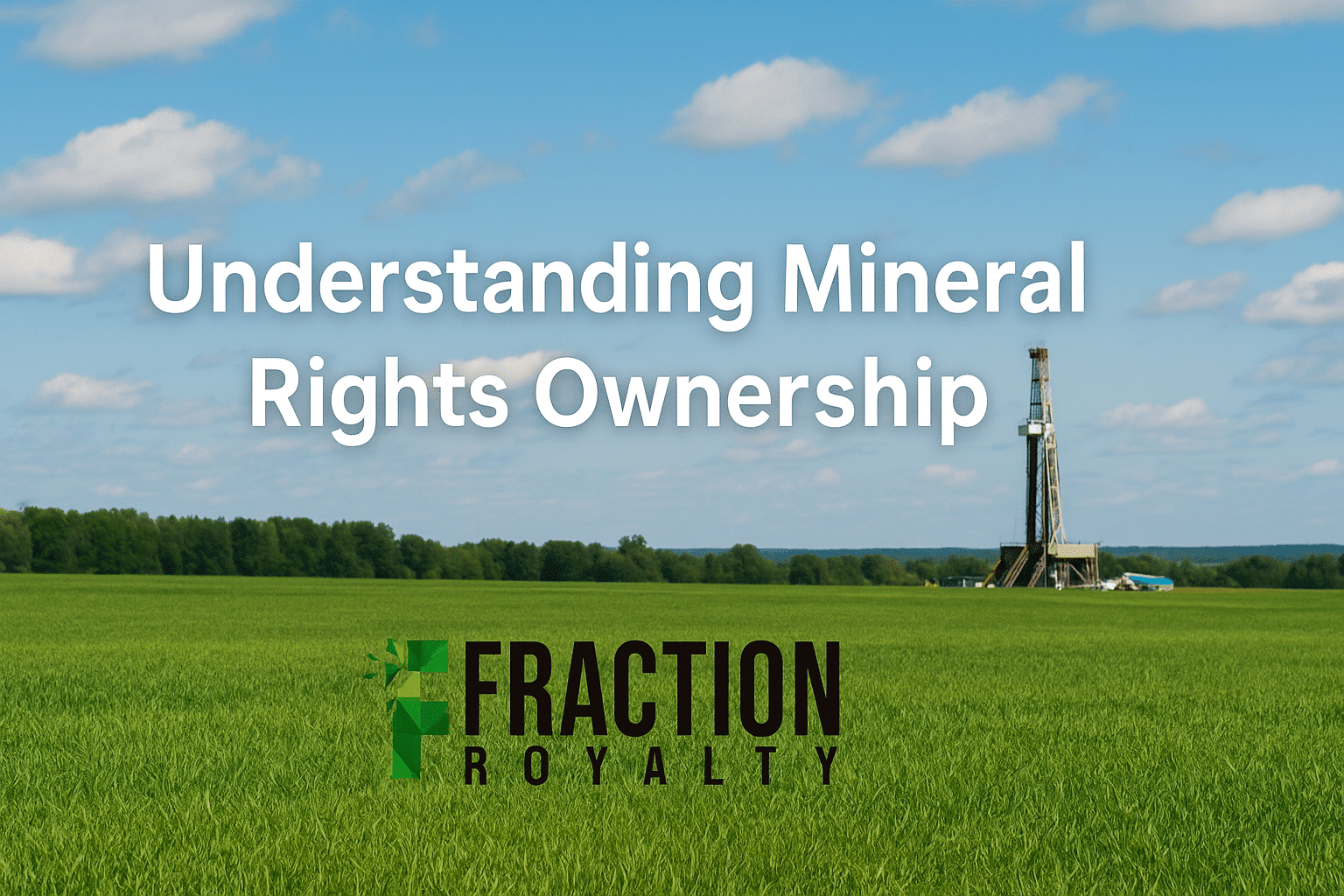Understanding Mineral Rights Ownership
If you own land, you might also own the minerals beneath it. But mineral rights can be complex and confusing. This guide will walk you through the basics of mineral rights ownership, how it works, and what to know if you’re considering selling your mineral rights.
We’ll keep it simple, easy to follow, and give you tips to get started.
What Are Mineral Rights?
Mineral rights give you ownership of the resources beneath the surface of your land.
This includes things like oil, gas, coal, metals, and more. In the United States, mineral rights can be sold or leased separately from the surface rights. That means someone can own the ground while someone else owns what’s underneath it.
If you inherit land or buy property, you might automatically receive the mineral rights. But in many cases, those rights were sold off long ago. Always check the deed or title history to see what you actually own.
Surface vs Mineral Ownership
Surface rights and mineral rights are not always the same.
-
Surface rights give you control over the land’s surface — where you can build, farm, or live.
-
Mineral rights give you the ability to sell or lease the underground resources.
In what’s called a “split estate,” one person can own the surface while another owns the minerals. If someone else holds the mineral rights, they may be allowed to drill or mine on your land, even if you live there — though this depends on your state laws and lease terms.
Understanding the difference is key to knowing your true ownership.
Types of Mineral Interests
Mineral ownership can take several different forms. Here are the most common:
Fee Simple Ownership
This is the most complete form of ownership. It means you own both the surface and the minerals underneath. You have full control over what happens on and under your land.
Mineral Interest
You only own the mineral rights, not the surface. You can lease or sell these rights, and you might receive royalties from production.
Royalty Interest
You don’t have control over drilling or leasing, but you receive a portion of the profits when production occurs. This interest typically comes from leasing your mineral rights to an oil and gas company.
Overriding Royalty Interest
This is a temporary interest carved out of an existing lease. It ends when the lease expires but allows you to collect oil and gas royalty payments while it’s active.
Working Interest
This type of ownership comes with the responsibility to pay for drilling and production costs. It’s more common for investors and oil companies than private landowners.
Each type of mineral interest has different responsibilities and benefits, so knowing what you hold is important before taking any action.
How Ownership Is Recorded
Ownership of mineral rights is recorded in county property records, just like surface rights.
The best way to find out what you own is to:
-
Check your deed. It may state whether you hold mineral rights.
-
Search county records. You can trace the chain of title to see if mineral rights were ever severed from the surface.
-
Hire a landman or title expert. They can do a professional title search if you’re unsure.
-
Get a free evaluation. Some companies, like Fraction Royalty, offer quick, no-cost reviews of your mineral ownership.
The process can be tricky, especially in areas with long histories of leasing and selling. But getting clarity on what you own is the first step in making informed decisions.
What Rights You Actually Hold
Owning mineral rights doesn’t always mean you can drill or dig whenever you want.
Depending on your interest type and location, your rights may include:
-
The right to lease. You can lease your minerals to an oil company and receive a signing bonus or royalties.
-
The right to sell. You can sell your mineral rights outright, which gives you a lump sum payment and removes future risks.
-
The right to royalties. If your minerals are already leased, you may be receiving (or entitled to) royalty payments.
-
The right to explore and develop. If you have full control, you could even hire a company to explore your land.
Understanding these rights helps you know what options are on the table — especially if you’re contacted by a buyer or oil company. There are also resources like NARO out there who help mineral owners.
Get a Free Mineral Rights Evaluation
Not sure what you own or what it’s worth?
At Fraction Royalty, we specialize in small mineral deals that others ignore. We provide fast, no-pressure offers — usually within 24 hours — and we can close most deals in 7 days or less. There are no fees or closing costs, and we make the process as easy as possible.
Whether you’re ready to sell or just want to understand your rights, we’re here to help.
Fill out our contact form today to get started with your free mineral rights evaluation.
Same Day Quote
After we receive your last 3 months of royalty statements, our team will put together a formal offer for you to consider. Your formal offer will be ready within 24 hours, and typically the same day you provide your documentation.


